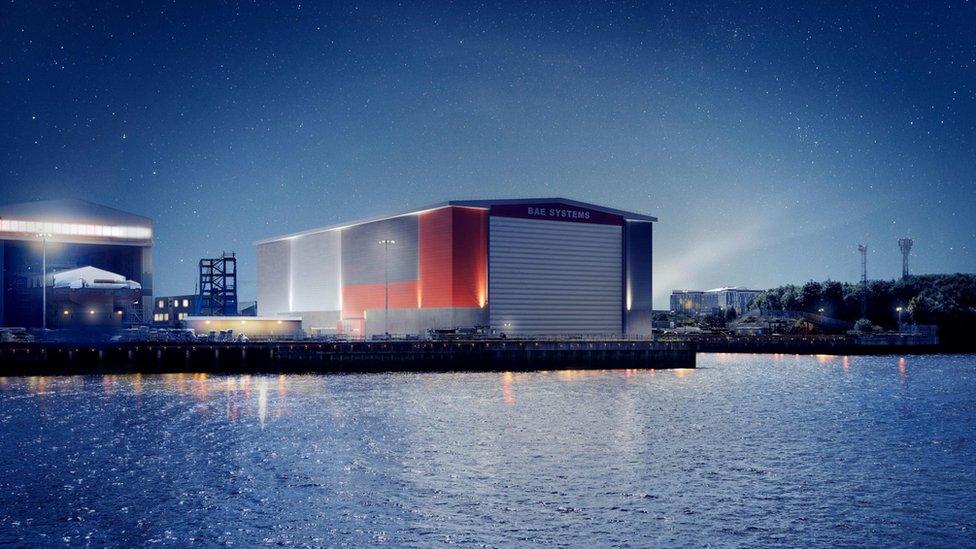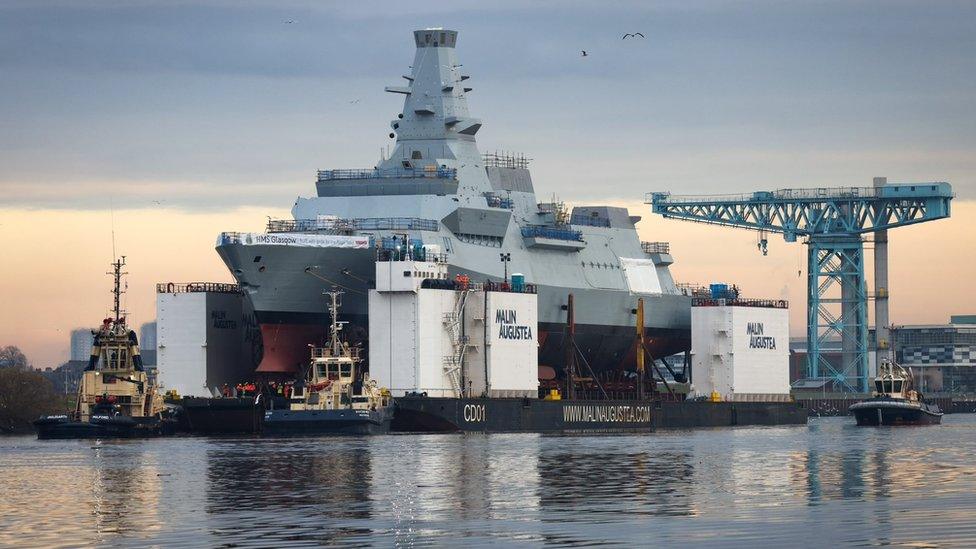Construction begins at Glasgow 'frigate factory'
- Published

The new ship build hall on the Clyde will require more than 6,000 tonnes of steel and 20,000 cubic metres of concrete
Construction has begun on a huge "frigate factory" in Glasgow which will be able to build two Royal Navy warships simultaneously under cover.
The new build hall at the Govan shipyard on the River Clyde is being constructed by BAE Systems as part of a £300m investment to its facilities.
Once complete it will improve working conditions and stop shipbuilding being affected by adverse weather conditions.
BAE Systems has a contract to build five more Type 26 ships.
It secured the £4.2bn contract last November from the Ministry of Defence (MOD) after an initial contract for three vessels.
Type 26 ships are designed for anti-submarine warfare and air defence. They are being built to replace the navy's 12 ageing Type 23 frigates.
The first of the new vessels, HMS Glasgow, left the Govan shipyard in 2022.
BAE Systems said all eight of the frigates will be built in Govan and Scotstoun which will sustain about 1,700 jobs in Scotland with a further 2,300 across the wider UK supply chain.

HMS Glasgow was built at the Govan shipyard and is now at the Scotstoun shipyard having systems installed
Stephen Charlick, DE&S Type 26 programme project manager, said: "Providing the capability to construct two Type 26 Frigates within a controlled, weathertight facility will greatly improve the working environment.
"Quality will also be improved, and each ship will be more materially complete before moving across to the dry dock in Scotstoun for test and acceptance. All of this will culminate in a quicker delivery of the Type 26 frigates to the Royal Navy."
Preparation work began earlier this year at the Govan site, filling in a basin on which the new building will stand.
When finished the ship build hall, being constructed by McLaughlin and Harvey, will comprise 6,000 tonnes of steel and 20,000 cubic metres of concrete.
The building will be equipped with two 100-tonne cranes, a further two 20-tonne cranes and is designed to accommodate up to 500 workers per shift.
Simon Lister, managing director of naval ships at BAE Systems, said: "We are the proud custodians of shipbuilding on the Clyde and our talented teams are working hard to build on that legacy to secure Glasgow's status as a shipbuilding centre of excellence for generations to come.
"Steel was cut on the fourth Type 26, HMS Birmingham, in April this year and work on the first three ships is already well under way.
"First-of-class HMS Glasgow is at BAE Systems' Scotstoun shipyard having complex systems installed, HMS Cardiff is currently being assembled and HMS Belfast is in its early construction phase."
Related topics
- Published1 December 2022

- Published15 November 2022
